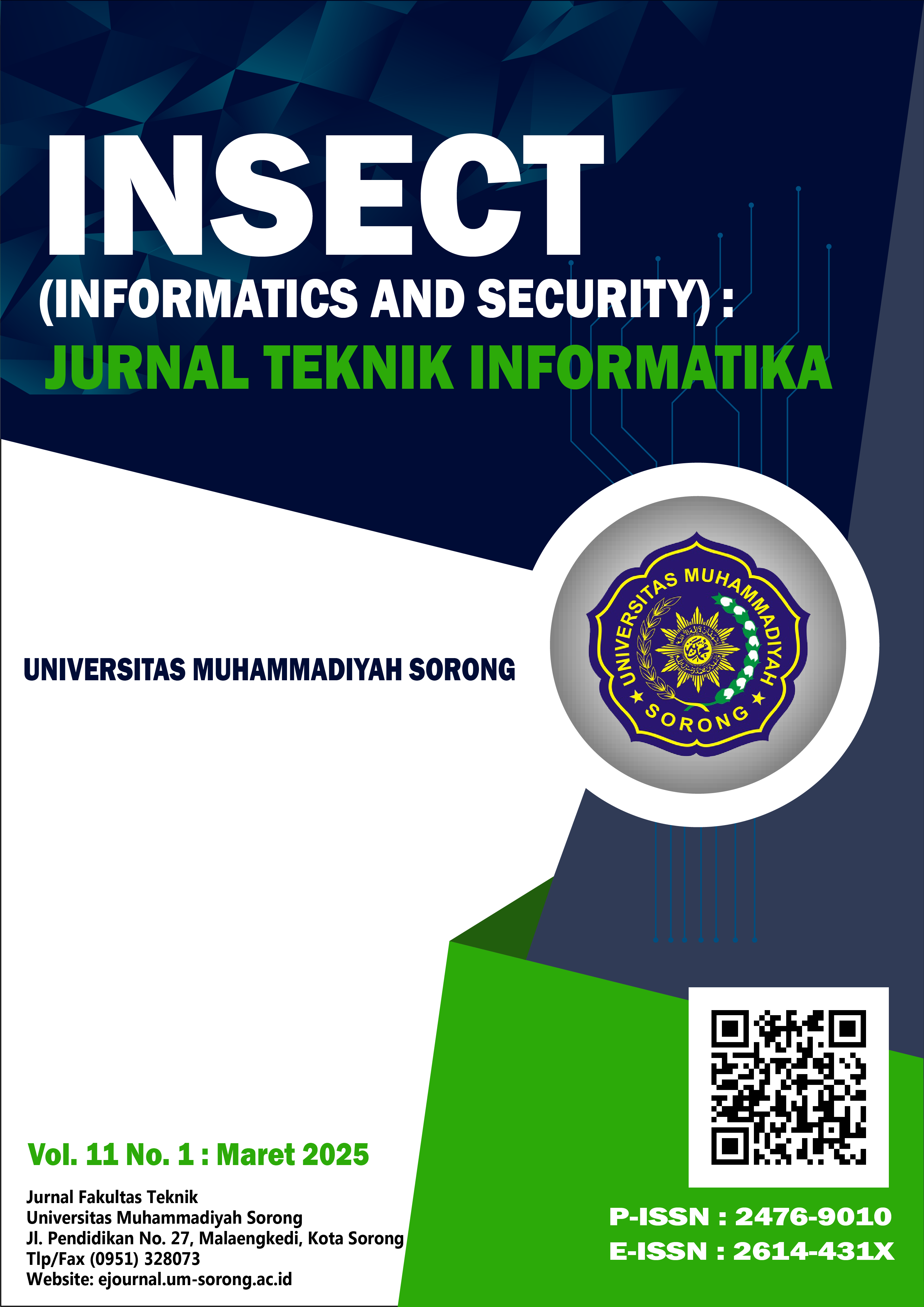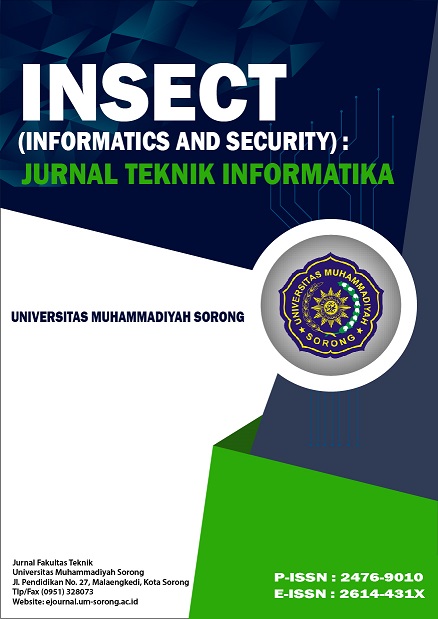Mobile Forensic Analysis on IMO Messenger Application Using ACPO and NIJ Frameworks
DOI:
https://doi.org/10.33506/insect.v10i2.4052Keywords:
ACPO, Cyberbullying, Digital Forensik, Mobile Forensik, NIJAbstract
The need for efficient digital forensic tools has become increasingly urgent with the rapid development of digital communication platforms. This study aims to compare forensic frameworks on the Android application IMO Messenger, focusing on the Association of Chiefs of Police (ACPO) and the National Institute of Justice (NIJ) frameworks. The research utilizes the forensic tools MOBILEdit Forensic Express and Autopsy. The primary objective of the study is to gather evidence related to a body-shaming case. The findings show that MOBILEdit Forensic Express Pro achieved a 100% extraction rate, while Autopsy managed only 3.33%. By adhering to the guidelines established by ACPO and NIJ, the data extraction process was conducted following legitimate and accountable procedures. The use of certified tools and appropriate methods ensured that the extracted data remained accurate, valid, and reliable. These findings contribute to advancing knowledge in mobile forensics for addressing cyberbullying, providing valuable insights for investigators.
References
[1] H. H. Lwin, W. P. Aung, dan K. K. Lin, “Comparative Analysis of Android Mobile Forensics Tools,” 2020 IEEE Conf. Comput. Appl. ICCA 2020, hal. 1–6, 2020, doi: 10.1109/ICCA49400.2020.9022838.
[2] F. Negaresh, M. Kaedi, dan Z. Zojaji, “Gender Identification of Mobile Phone Users based on Internet Usage Pattern,” Int. J. Eng. Trans. C Asp., vol. 36, no. 2, hal. 335–347, 2023, doi: 10.5829/ije.2023.36.02b.13.
[3] M. ALThebaity, S. Mishra, dan M. Kumar Shukla, “Forensic Analysis of Third-party Mobile Application,” Helix, vol. 10, no. 4, hal. 32–38, 2020, doi: 10.29042/2020-10-4-32-38.
[4] A. Amorim, F. Pereira, C. Alves, dan O. García, “Species assignment in forensics and the challenge of hybrids,” Forensic Sci. Int. Genet., vol. 48, 2020, doi: 10.1016/j.fsigen.2020.102333.
[5] J. Qiu, J. Zhang, W. Luo, L. Pan, S. Nepal, dan Y. Xiang, “A Survey of Android Malware Detection with Deep Neural Models,” ACM Comput. Surv., vol. 53, no. 6, 2021, doi: 10.1145/3417978.
[6] D. P. Harahap, “Implementasi Digital Forensik Aplikasi Dompet Digital Dan Pesan Instan Pada Android Dengan Menggunakan Metode NIST,” KOMIK (Konferensi Nas. Teknol. Inf. dan Komputer), vol. 6, no. 1, hal. 533–541, 2023, doi: 10.30865/komik.v6i1.5715.
[7] A. Yavari, H. Hassanpour, B. R. Cami, dan M. Mahdavi, “Election Prediction Based on Sentiment Analysis using Twitter Data,” Int. J. Eng. Trans. B Appl., vol. 35, no. 2, hal. 372–379, 2022, doi: 10.5829/ije.2022.35.02b.13.
[8] M. Farhoodi, A. T. Eshlaghy, dan M. R. Motadel, “A Proposed Model for Persian Stance Detection on Social Media,” Int. J. Eng. Trans. C Asp., vol. 36, no. 6, hal. 1048–1059, 2023, doi: 10.5829/ije.2023.36.06c.03.
[9] G. M. Abaido, “Cyberbullying on social media platforms among university students in the United Arab Emirates,” Int. J. Adolesc. Youth, vol. 25, no. 1, hal. 407–420, 2020, doi: 10.1080/02673843.2019.1669059.
[10] A. Ademiluyi, C. Li, dan A. Park, “Implications and Preventions of Cyberbullying and Social Exclusion in Social Media: Systematic Review,” JMIR Form. Res., vol. 6, no. 1, hal. 1–12, 2022, doi: 10.2196/30286.
[11] H. F. Hansen, “Analysis of NIST Methods on Facebook Messenger For Forensic Evidence,” JIRK, vol. 1, hal. 695–702, 2022, doi: 10.2307/3412739.
[12] M. Yao, C. Chelmis, dan D. S. Zois, “Cyberbullying ends here: Towards robust detection of cyberbullying in social media,” Web Conf. 2019 - Proc. World Wide Web Conf. WWW 2019, hal. 3427–3433, 2019, doi: 10.1145/3308558.3313462.
[13] H. Nurhairani dan I. Riadi, “Analysis Mobile Forensics on Twitter Application using the National Institute of Justice (NIJ) Method,” Int. J. Comput. Appl., vol. 177, no. 27, hal. 35–42, 2019, doi: 10.5120/ijca2019919749.
[14] E. H. K. Dewi, A. Suharso, dan C. Rozikin, “Implementasi Cosine Similarity Dalam Analisis Investigasi Cyberbullying Pada Twitter Dengan Framework Nist,” Cyber Secur. dan Forensik Digit., vol. 5, no. 1, hal. 12–22, 2022, doi: 10.14421/csecurity.2022.5.1.3397.
[15] M. K. Bhatia, P. Gambhir, S. Sinha, dan S. K. Singh, “A Comparative Analysis of OS Forensics Tools,” Int. J. Res. Appl. Sci. Eng. Technol., vol. 10, no. 11, hal. 494–502, 2022, doi: 10.22214/ijraset.2022.47346.
[16] T. Hermawan dan L. Roselina, “Android Forensic Tools Analysis for Unsend Chat on Social Media,” hal. 233–238, 2021.
[17] G. Fanani, I. Riadi, dan A. Yudhana, “Analisis Forensik Aplikasi Michat Menggunakan Metode Digital Forensics Research Workshop,” J. MEDIA Inform. BUDIDARMA, vol. 6, no. 2, hal. 1263–1271, Apr 2022, doi: 10.30865/mib.v6i2.3946.
[18] A. Yudhana, I. Riadi, dan I. Anshori, “Analisis Bukti Digital Facebook Messenger Menggunakan Metode Nist,” vol. 3, no. 1, hal. 13–21, 2018.
[19] J. Choi, J. Yu, S. Hyun, dan H. Kim, “Digital forensic analysis of encrypted database files in instant messaging applications on Windows operating systems: Case study with KakaoTalk, NateOn and QQ messenger,” Digit. Investig., vol. 28, hal. S50–S59, 2019, doi: 10.1016/j.diin.2019.01.011.
[20] M. El-tayeb, A. Taha, dan Z. Taha, “Ingénierie des Systèmes d ’ Information Streamed Video Reconstruction for Firefox Browser Forensics,” Int. Inf. Eng. Technol. Assoc., vol. 26, no. 4, hal. 337–344, 2021.
[21] J. Hou, Y. Li, J. Yu, dan W. Shi, “A Survey on Digital Forensics in Internet of Things,” IEEE Internet Things J., vol. 7, no. 1, hal. 1–15, 2020, doi: 10.1109/JIOT.2019.2940713.
[22] K. A. Latif, R. Hammad, T. T. Sujaka, K. Marzuki, dan A. S. Anas, “Forensic Whatsapp Investigation Analysis on Bluestack Simulator Device Using Live Forensic Method With ACPO Standard,” Int. J. Inf. Syst. Technol. Akreditasi, vol. 5, no. 3, hal. 331–338, 2021.
[23] R. I. Ferguson, K. Renaud, S. Wilford, dan A. Irons, “PRECEPT: a framework for ethical digital forensics investigations,” J. Intellect. Cap., vol. 21, no. 2, hal. 257–290, 2020, doi: 10.1108/JIC-05-2019-0097.
[24] J. J. Turanovic dan S. E. Siennick, “The causes and consequences of school violence: A review,” Sch. Violence Causes, Prev. Saf. Meas., no. February, hal. 1–80, 2022.
[25] T. Feucht, “The National Institute of Justice (NIJ),” Encycl. Res. Methods Criminol. Crim. Justice Vol. II Parts 5-8, vol. II, hal. 800–803, 2021, doi: 10.1002/9781119111931.ch152.
[26] I. Riadi, A. Yudhana, dan G. P. I. Fanani, “Comparative Analysis of Forensic Software on Android-based MiChat using ACPO and DFRWS Framework,” J. RESTI (Rekayasa Sist. dan Teknol. Informasi), vol. 7, no. 2, hal. 286–292, 2023, doi: 10.29207/resti.v7i2.4547.
[27] H. Hajar, H. Hermansa, dan I. Ilcham, “Investigasi Stego File Menggunakan Framework National Institute of Justice,” CONTEN Comput. Netw. Technol., vol. 4, no. 1, hal. 31–42, 2024, doi: 10.31294/conten.v4i1.3527.
[28] M. A. Aziz, W. Y. Sulistyo, dan S. R. Astari, “Komparatif Anti Forensik Aplikasi Instant Messaging Berbasis Web Menggunakan Metode Association of Chief Police Officers ( ACPO ),” J. Ris. Teknol. Inf. dan Komput., vol. 1, no. 1, hal. 8–15, 2021, doi: 10.53863/juristik.v1i01.341.

Downloads
Published
How to Cite
Issue
Section
License
Copyright (c) 2025 Yana Safitri, Firmansyah Firmansyah, Muhammad Amirul Mu’min

This work is licensed under a Creative Commons Attribution-ShareAlike 4.0 International License.







